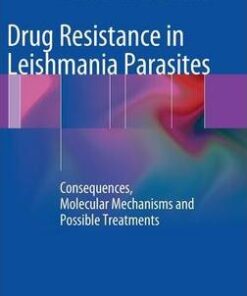(PDF) Lymphatic Filariasis – Epidemiology, Treatment and Prevention by Brij Kishore Tyagi
$18.00
Download instantly Lymphatic Filariasis – Epidemiology, Treatment and Prevention – The Indian Perspective by Brij Kishore Tyagi. It is ebook in PDF format.
ISBN-10: 9811313903 ISBN-13: 9789811313905
Preview
This is the PDF eBook version for Lymphatic Filariasis – Epidemiology, Treatment and Prevention – The Indian Perspective by Brij Kishore Tyagi
Table of Contents
1. Epidemiology of lymphatic filariasis.- 2. Lymphatic filariasis – prevalence, prevention control and elimination: a review in Indian scenario.- 3. Next step lymphatic filariasis eradication: Current status in the development of a vaccine against lymphatic filariasis.- 4. Progress in the treatment and control of lymphatic filariasis.- 5. Immunotechnological advancement in developing vaccines for Lymphatic Filariasis.- 6. Recombinant filarial, Wolbachia antigens and their role in the immunopathogenesis of human lymphatic filariasis.- 7. Transmission Potential of Wuchereria bancrofti by Culex quinquefasciatus in Malaysia and its global significance.- 8. Genetic diversity, molecular markers and population genetics of human lymphatic filarial parasites.- 9. Transmission dynamics of diurnally subperiodic lymphatic filariasis in the Andaman & Nicobar Islands.- 10. Success story and challenges faced to achieve ‘Elimination of Lymphatic Filariasis’ Status in Tamil Nadu.- 11. Prevalence of lymphatic filariasis in the northeastern States of India, with particular reference to Assam and prospects of elimination.- 12. An overview of lymphatic filariasis in Puducherry Union Territory, highlighting the elimination programme in India.- 13. Sporadic incidence of lymphatic filariasis in non-endemic state of Rajasthan and control of the vector (Culex quinquefasciatus Say, 1823), with innovative botanicals and a possible hypothesis on spread of ‘disease endemism’.- 14. Integrated vector control for the elimination of lymphatic filariasis in the villages of Tirukoilur, south India.- 15. The Indian lymphatic filariasis elimination programme – the success to sustain.- 16. Bioecology, insecticide susceptibility and management of Culex quinquefasciatus Say, 1823, a major vector of lymphatic filariasis in India.- 17. Ecology and biology of Culex quinquefasciatus Say, 1823, in two physiographically different ecosystems with special reference to human lymphatic filariasis in West Bengal, India.- 18. Actinobacteria: A promising biocontrol agent for filariasis vector, Culex quinquefasciatus Say, 1823 (Insecta: Diptera; Culicidae).- 19. Nanopesticides: A boon towards the control of dreadful vectors of lymphatic filariasis.- 20. Identification and mapping of breeding habitats of the filariasis vector, Culex quinquefasciatus Say, 1823, using Remote Sensing and GIS Technologies – A Case Study from the endemic Tamil Nadu state, India.- 21. Scenario of lymphatic filariasis (LF) in Bangladesh: a scientific approach.- 22 . Biological Control of Culex quinquefasciatus Say, 1823 (Diptera: Culicidae), the ubiquitous vector for lymphatic filariasis.- 23. Chemical control of Culex quinquefasciatus (Say, 1823), the principal vector of bancroftian filariasis, with emphasis on resistance development against insecticides in India.- 24. Perspectives of lymphatic filariasis with special reference to ‘Sleepada’ – An Ayurvedic loom.




